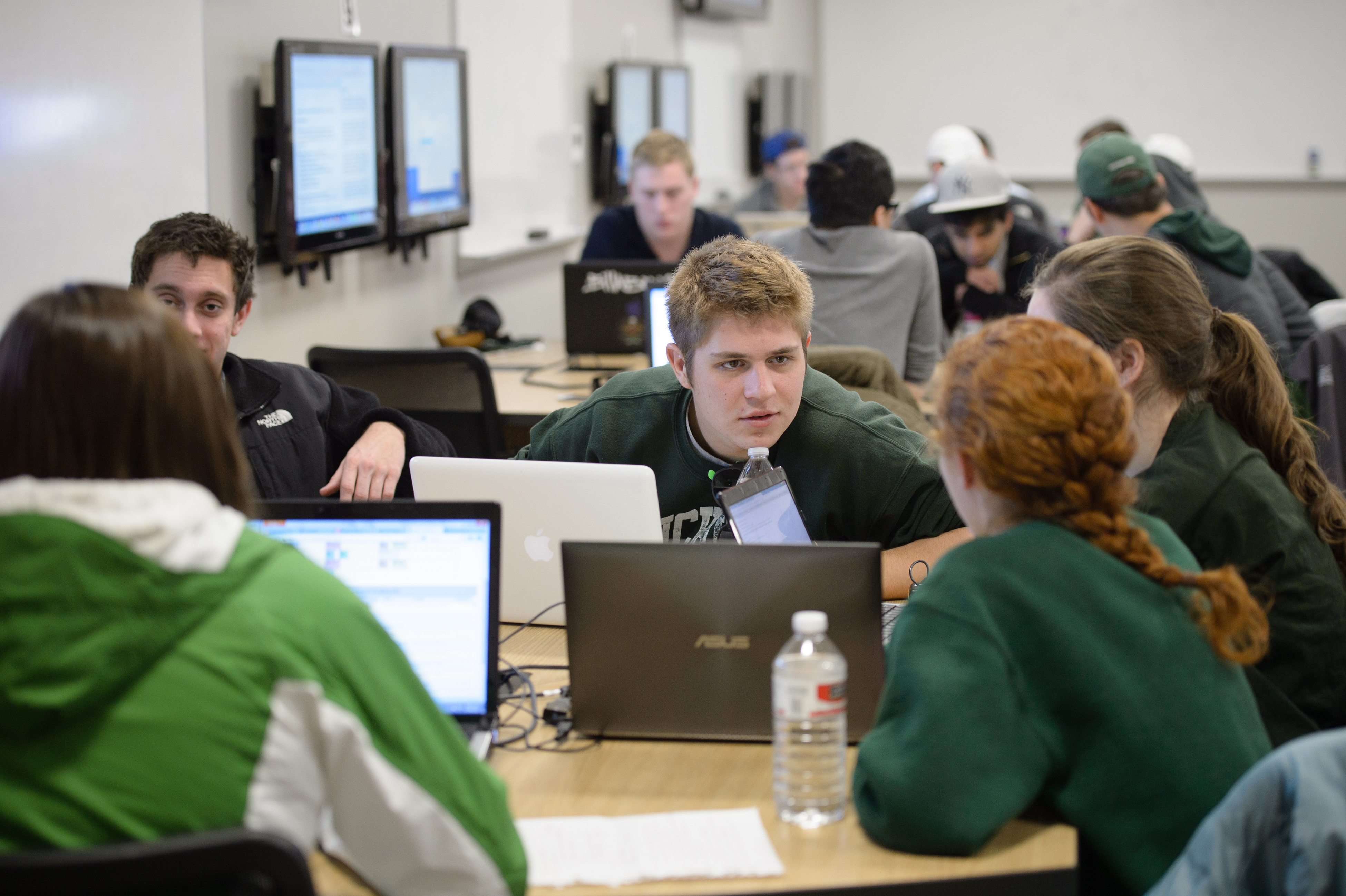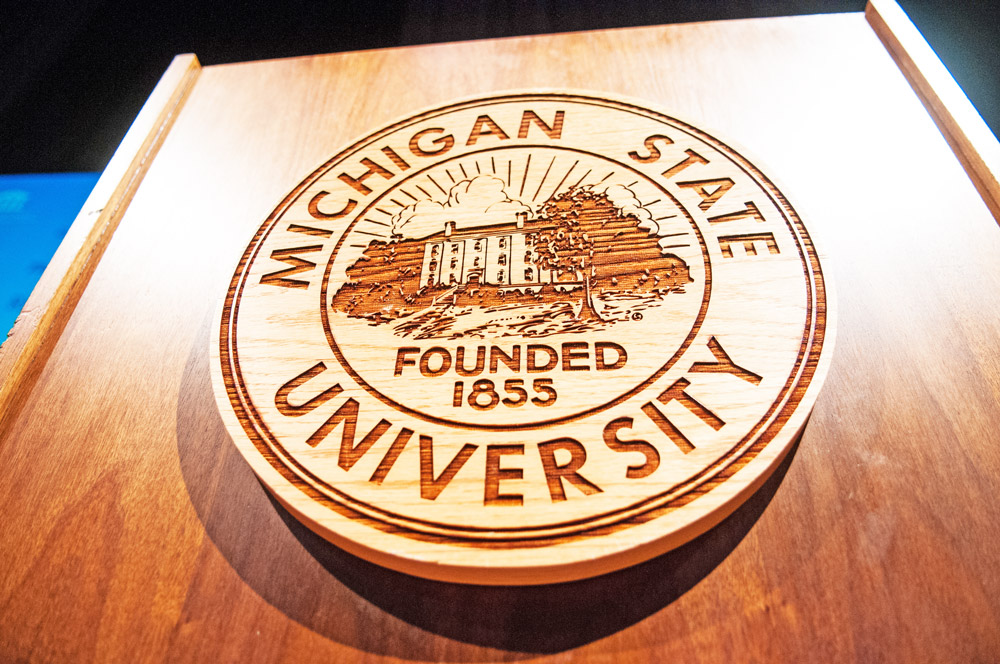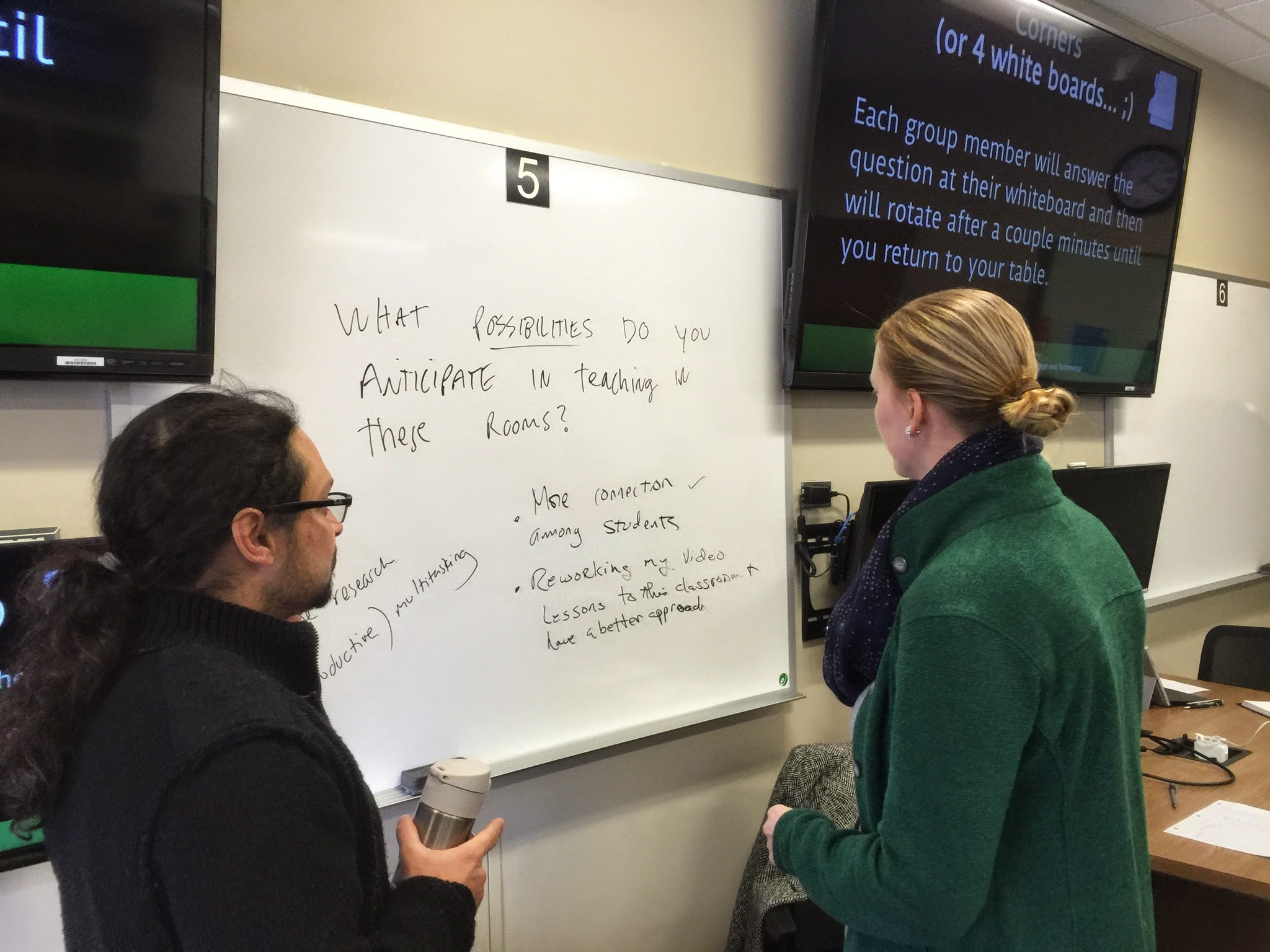The REAL (Rooms for Engaged and Active Learning) spaces at MSU are a pedagogical philosophy made manifest. If the traditional lecture style classroom is the ultimate expression of the professor-focused lecture, then the REAL spaces are that for student-focused collaboration.
The REAL spaces can be a challenging environment for both teachers and students. It requires an adjustment of expectations, both in what a classroom should look like, and what activities take place during a class period. However, the overall experience can be a very rewarding one.
Learn more about REAL at MSU
MSU IT will be hosting a REAL Panel Discussion and Workshop on Friday, February 16, from 1:00-4:00 p.m. in Bessey Hall, room 310.
The goal of this event will be to introduce the technology and techniques associated with the REAL spaces and to provide an opportunity those who are curious about them to discuss the spaces with teachers who have used them.
Interested faculty and instructors can register for the no-cost event through EBS.
Background on REAL
MSU began experimenting with this style of classroom in 2012. The concept has been utilized at numerous other universities, though MSU’s primary inspiration came from the research on active learning classrooms spearheaded by folks at the University of Minnesota.
The initial idea behind the REAL spaces at MSU was to create a classroom that was designed with a flipped learning model in mind. In this model, the usual method of content delivery occurring via a face to face lecture, and students working on assignments outside of class is flipped. This means students engage with the content outside of class via video and other media, while the assignments are done during class time with the instructor’s guidance.
This method of learning allows for greater student-to-student collaboration, as well as more direct and meaningful teacher-to-student interaction.
REAL progress at MSU
Since the REAL spaces became available, we have observed that, while the spaces were created with the flipped model in mind, it certainly isn’t the only model that can be utilized. Teachers have found great success with various mixtures of classroom lecture, projects and in-class assignments.
As long as the primary focus is on engagement and collaboration, then the class should function well in a REAL space.

REAL preparation
Partially because the REAL spaces represented a different approach to teaching at MSU, as well as advice from colleagues at the University of Minnesota, all those who wish to teach in the REAL spaces must first go through the REAL Academy. This provides an opportunity to go interact with the technology in the space, as well as work through ideas on how to structure the class.
Initially, the REAL Academy was a multi-day workshop, that usually involved several facilitators and teachers. Over time, this has been pared down to a much less formal, four-hour session, usually between one or two teachers.
While this approach is useful, and certainly less time consuming, it does miss a key component that the more formal academy had; interactions between teachers. This is why we have redesigned the sessions in a way that incorporates the best of both worlds.
New discussion & workshop approach
The new approach maintains the less formal approach while incorporating a panel discussion and technology demonstration. The technology demonstration will show the affordances of the rooms technology, as well as some common issues that may come up, and how to address them.
The REAL Panel Discussion & Workshop provides an opportunity for teachers who have taught in the REAL spaces to share their approaches and also answer questions.
Additionally, the session will be open to anyone who is interested in the REAL spaces, even if they aren’t planning on teaching in the space anytime soon. So, join us for a REAL Panel/Workshop on Friday, February 16. Feel free to contact me, Nick Noel, with any further questions.



